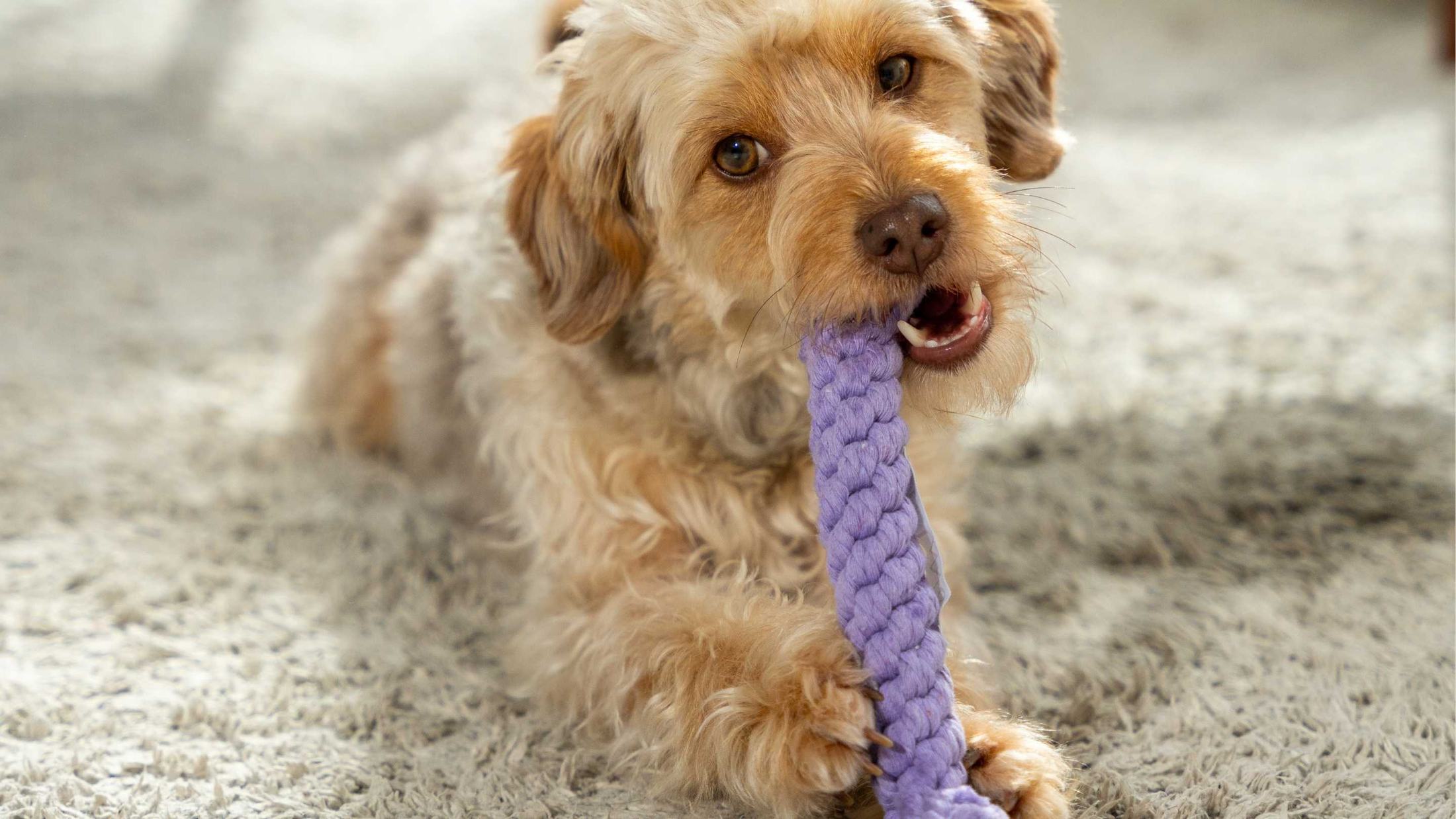For many dog owners, driving with their four-legged friend is part of everyday life – whether for a trip to the countryside, visiting family and friends, or on vacation. However, what many underestimate is that an unsecured or stressed dog can quickly become a danger to themselves and others. This blog post shows you how to make driving with your dog safe, legal, and stress-free.
The most important things at a glance
-
Legal requirement: Dogs are considered “cargo” in cars and must be secured according to §23 StVO – otherwise you risk fines and limited insurance coverage.
-
Securing options: Transport boxes, safety belts with harnesses and partition grilles offer suitable solutions for safety and comfort depending on the dog and vehicle.
-
Getting used to it is training: Gradual training, positive associations and calmness help the dog to experience car journeys without stress.
-
Preparation counts: Sufficient exercise, appropriate feeding, breaks and a packing list with water, treats and emergency equipment ensure a relaxed journey.
-
Be careful in hot and cold weather: Never leave dogs in a parked car – not even for a short time! Temperature hazards in vehicles can be life-threatening.
Table of contents
- Legal basis in Germany
- Security solutions at a glance
- How to get your dog used to driving in the car
- While driving: What to consider
- Conclusion & practical tips for everyday life
Legal basis in Germany
In Germany, the German Road Traffic Act (StVO) regulates how dogs must be transported in cars. According to Section 23 of the StVO, dogs are legally considered "cargo." This means they must be secured in such a way that they cannot slip, fly around, or distract the driver during sudden braking, sharp cornering, or an accident. Those who transport their dogs without a secure hold not only risk their own safety but also violate legal regulations.
Failure to comply with this regulation can result in a fine of at least €30. If an unsecured dog causes a hazard or even an accident, the fines increase significantly – up to €75 and a penalty point on your license are possible. Furthermore, insurance coverage may be limited or even canceled in the event of an accident if it can be proven that the dog was not properly secured and this influenced the occurrence or extent of the damage.
Here you can find current fines for transporting animals in cars: https://www.bussgeldkatalog.org/tiere/ .
The legal regulation therefore serves to protect all vehicle occupants – and, of course, your dog's well-being. An unsecured dog is not only at risk in an emergency, but its weight can also propel it through the vehicle like a projectile in an impact, causing serious injuries.
Security solutions at a glance
To ensure that your dog's transport not only complies with legal requirements but is also safe and comfortable, various restraint systems are available. Choosing the appropriate method depends on several factors—particularly the size and temperament of your dog, the vehicle's equipment, and the length of the journey.
Transport boxes
Transport crates are considered one of the safest options for transporting dogs in cars. They are ideally made of metal or hard plastic and should be positioned so that they cannot move – ideally across the direction of travel in the trunk or on the back seat with additional security through a seatbelt or Isofix.
Advantages:
-
High level of safety due to solid structure
-
Protecting the dog in the event of sudden braking or accidents
-
Retreat and familiar space for the dog, especially on longer journeys
Important: Make sure the crate is large enough for your dog to stand, turn around, and lie comfortably. A crate that's too small can cause stress and restrict movement too much.
Seat belts & dog harnesses
A special safety belt attached to a sturdy dog harness (not a collar!) is a sensible and flexible solution, especially for small to medium-sized dogs. The belt connects to the vehicle's seat belt system – ideally in the back seat, not the passenger seat, where the airbag poses an additional risk.
Advantages:
-
Cheap to buy
-
Easy handling on short journeys
-
Good freedom of movement for the dog during the journey (with correct length adjustment)
Note: Only use tested and crash-tested seat belts and make sure that the dog harness does not cut into the skin or chafe.
Protective grilles & partition grilles
For larger dogs transported in the trunk, protective grilles or partitions are a proven method. These devices are mounted between the trunk and the rear seat or roof lining and prevent the dog from entering the passenger compartment.
Advantages:
-
Particularly suitable for large dogs and station wagons or SUVs
-
No restriction of space on the back seat
-
Good air circulation and freedom of movement for the dog
Tip: Combine the partition with a non-slip mat or a special trunk mat to increase comfort for your dog.
Comparison of backup methods
| Backup method | Security | Comfort for the dog | Suitable for |
|---|---|---|---|
| transport box | High | High | All dogs |
| seat belt | Medium | Medium to high | Small/Medium-sized dogs |
| Partition grille | Medium | High | Large dogs |
By choosing the right securing method, you create the basis for relaxed and safe car journeys – both for you and your four-legged companion.
How to get your dog used to driving in the car
Not every dog is enthusiastic about getting into a car. Some have had bad experiences, while others simply get sick. However, with patience and training, you can help your dog get used to car travel.
Tips for settling in:
-
Start with short training phases: only sit in the car, do not drive off, reward
-
Increase the duration gradually
-
At first, only drive to pleasant destinations (e.g. a walk in the forest)
-
Use familiar objects such as blankets or toys
-
Stay calm and positive, even if the dog is nervous
Preparation for short and long car journeys
Good preparation is essential to ensure a pleasant journey for both humans and animals. Keep in mind both safety and your dog's well-being.
Before the trip:
-
Feed your dog about 2 hours before departure (to avoid nausea)
-
Allow him sufficient exercise and a toilet visit
-
Check the safety device
What you should pack:
-
Water & Bowl
-
Treats & food if necessary
-
Dog blanket or favorite toy
-
Poop bags
-
First aid kit for dogs
-
EU pet passport (for longer journeys or trips)
While driving: What to consider
You should also pay attention to your dog's well-being while traveling. Good ventilation (but no drafts directly onto the dog) and regular breaks are important. Stop every two to three hours to allow your dog to relieve itself and exercise. Offer fresh water at every break and ensure safe entry and exit.
Some dogs suffer from travel sickness or exhibit stress symptoms such as panting, trembling, or whining. To counteract this, you should not feed your dog for two to four hours before the trip and ensure a calm driving style. Calming music, familiar objects, or even special training can help reduce stress levels. In persistent cases, your veterinarian may recommend herbal or medicinal support.
Also, be sure to pay attention to the temperature in the car . In summer, the vehicle can heat up considerably within minutes – a life-threatening situation for dogs. Never leave your four-legged friend alone in a parked car and use sun protection if necessary. In winter, however, there is a risk of hypothermia. Blankets, an insulated bed, and a moderate interior temperature help protect your dog from the cold.
Traveling with puppies requires special attention. Young dogs should be introduced to car travel slowly and carefully. Use short, positive trips with plenty of rewards. On longer journeys, it's advisable to take especially frequent breaks.
If an accident occurs, it's important to remain calm. Secure the scene and get yourself to safety before attending to your dog. Check for injuries and contact a veterinarian immediately. Only transport your dog if it is not showing any acute pain and you can move it safely.
When traveling abroad with your dog, additional regulations apply. Within the EU, you need a valid pet passport with a confirmed rabies vaccination. Before traveling, please check country-specific regulations, as some countries have special transport or entry requirements.
Conclusion & practical tips for everyday life
Car journeys with your dog can be safe and enjoyable with the right preparation and equipment. Remember to comply with legal requirements, choose an appropriate restraint method, and consider your dog's needs. We wish you a pleasant and safe journey!
The most important do's and don'ts:
DOS:
-
Always secure your dog
-
Take regular breaks
-
Provide fresh air
-
Training & Patience
Don'ts:
-
Taking your dog with you without security
-
Leave in the car in hot or cold weather
-
Ignoring restlessness or fear





